
An overprint is an additional layer of text or graphics added to the face of a postage or revenue stamp, postal stationery, banknote or ticket after it has been printed. Post offices most often use overprints for internal administrative purposes such as accounting but they are also employed in public mail. Well-recognized varieties include commemorative overprints which are produced for their public appeal and command significant interest in the field of philately.
This is a survey of the postage stamps and postal history of Iceland. Regular mail service in Iceland was first established by a charter of 13 May 1776, and on 1 January 1873, Iceland issued its first postage stamps. The design was the same as for the Danish numeral issue of the time, denominated with values ranging from 2 to 16 skilling, and inscribed ÍSLAND. All are scarce or rare, and used copies are especially hard to find.
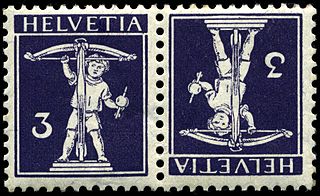
This is a survey of the postage stamps and postal history of Switzerland.
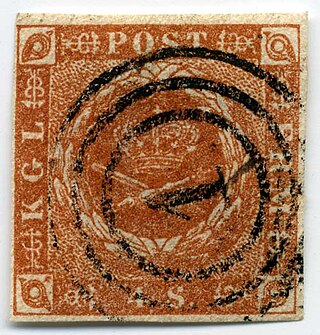
This is an overview of the postage stamps and postal history of Denmark.

This is a survey of the postage stamps and postal history of the Falkland Islands.

Posten, the Swedish mail service, was established in 1636 by Axel Oxenstierna, and by the 18th century it had been extended throughout the country.
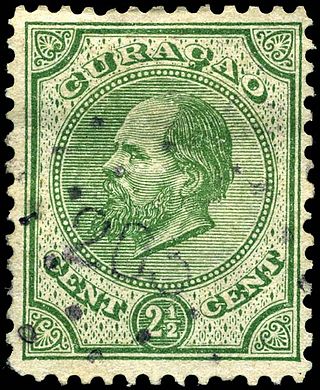
This is a survey of the postage stamps and postal history of the postal areas Netherlands Antilles as well as its predecessor Curaçao. The area consisted of the islands Bonaire, Saba and Sint Eustatius as well as Sint Maarten, Curaçao and Aruba.

Gabon is a country in west central Africa sharing borders with the Gulf of Guinea to the west, Equatorial Guinea to the northwest, and Cameroon to the north, with the Republic of the Congo curving around the east and south. Its size is almost 270,000 km2 with an estimated population of 1,500,000. The capital and largest city is Libreville.
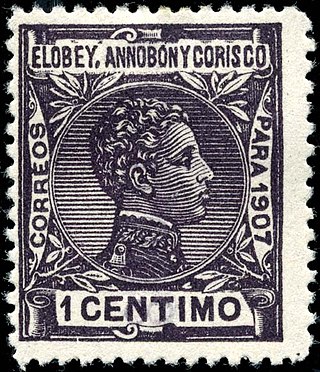
Elobey, Annobón, and Corisco was a colonial administration of Spanish Africa located in the Gulf of Guinea. The colony consisted of the small islands of Elobey Grande, Elobey Chico, Annobón, and Corisco. The capital was Santa Isabel. The islands are presently part of Equatorial Guinea.
This is a survey of the postage stamps and postal history of Macau.

Postage stamps and postal history of the Canal Zone is a subject that covers the postal system, postage stamps used and mail sent to and from the Panama Canal Zone from 1904 up until October 1978, after the United States relinquished its authority of the Zone in compliance with the treaty it reached with Panama.

This is a survey of the postage stamps and postal history of Cuba.

Numerous Chinese stamps depict Sun Yat-sen, and a representative collection can be acquired with little trouble. These may conveniently be divided as the definitives, provincial issues, overprints, and commemoratives, but there is much crossover between these categories.

The postal history of Malta began in the early modern period, when pre-adhesive mail was delivered to foreign destinations by privately owned ships for a fee. The earliest known letter from Malta, sent during the rule of the Order of St John, is dated 1532. The first formal postal service on the islands was established by the Order in 1708, with the post office being located at the Casa del Commun Tesoro in Valletta. The first postal markings on mail appeared later on in the 18th century.

The postal system of Norway dates from 1647, when Christian IV of Denmark-Norway granted a concession to a private company who established the Postvesenet. The Postvesenet primarily provided a way for various parts of the country to communicate with the central government in Christiania. Although Norway came under rule of the Swedish king in 1815, the postal service remained independent of the Swedish post, and continued to gradually established routes throughout the country.
Belize started as the colony of British Honduras, formally established in the 17th century but disputed through the 18th century.
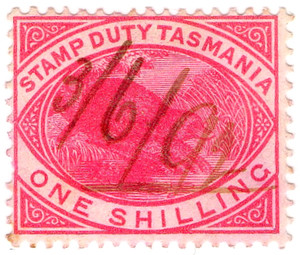
The Australian state of Tasmania issued adhesive revenue stamps from 1863 to 1998, although impressed stamps had appeared briefly in the 1820s. There were general revenue and stamp duty issues, as well as a number of specific issues for various taxes.

The South African Republic (ZAR), later known as Transvaal issued revenue stamps from 1875 to around 1950. There were a number of different stamps for several taxes.

Hong Kong issued revenue stamps from 1867 to the 1990s, both when it was a British colony as well as when it was under Japanese occupation.

Revenue stamps of Hawaii were first issued in late 1876 by the Kingdom of Hawaii to pay taxes according to the Stamp Duty Act of 1876, although embossed revenue stamps had been introduced decades earlier in around 1845. The stamps issued in 1876–79 were used for over three decades, remaining in use during the Provisional Government, the Republic and after Hawaii became a U.S. Territory. Some changes were made along the years: from rouletted to perforated, and some new values, colours, designs and overprints were added. Some postage stamps were briefly valid for fiscal use in 1886–88 to pay for a tax on opium imports, and a stamp in a new design was issued for customs duties in 1897. A liquor stamp was issued in 1905.

















